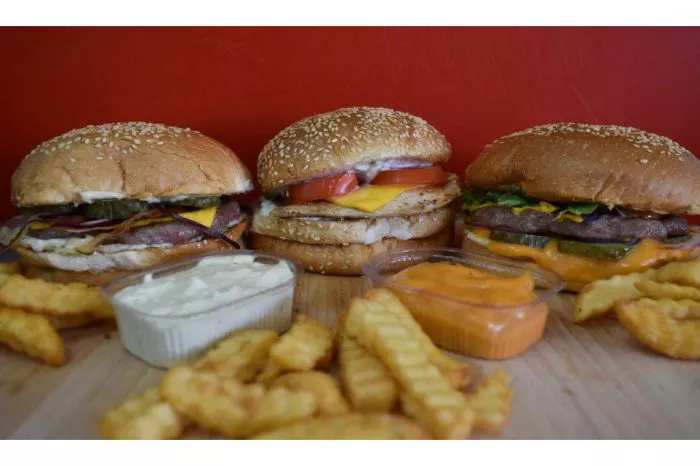I’d like to tell you, Certainly! Let’s delve into the nutritional aspects, ingredients, and overall health considerations of Chick-fil-A’s Grilled Chicken Wrap.
Nutritional Overview:
Calories:
Chick-fil-A’s Grilled Chicken Wrap typically contains around 350-400 calories. However, this can vary slightly based on factors like portion size and specific ingredients.
Protein:
One of the notable benefits of the Grilled Chicken Wrap is its protein content. With grilled chicken as the primary ingredient, it offers a substantial amount of protein, typically ranging from 25-30 grams per serving. Protein is essential for muscle repair and growth, satiety, and overall health.
Fat:
Compared to some other menu options at fast-food restaurants, the Grilled Chicken Wrap tends to be relatively low in fat. However, the specific fat content can vary based on factors like the type of dressing used and any additional toppings.
Carbohydrates:
Carbohydrate content in the Grilled Chicken Wrap primarily comes from the wrap itself, along with any sauces or toppings. Depending on these factors, carbohydrate content can range from around 30-40 grams per serving.
Fiber:
Fiber content in the Grilled Chicken Wrap may vary, depending on the type of wrap and any vegetable toppings. While it may not be exceptionally high in fiber, including vegetables like lettuce, tomatoes, and others can contribute to the overall fiber content.
Sodium:
One potential concern with fast food items, including the Grilled Chicken Wrap, is their sodium content. Depending on the specific ingredients and condiments used, the sodium content can vary significantly. It’s essential to be mindful of sodium intake, especially for individuals watching their blood pressure or sodium levels.
Ingredients:
Grilled Chicken:
The primary ingredient, grilled chicken, is a relatively lean source of protein. It provides essential nutrients like protein, vitamins, and minerals without the excess fat and calories often found in fried chicken.
Flour Tortilla:
The wrap is typically made with a flour tortilla, which provides the carbohydrate component of the meal. While not inherently unhealthy, flour tortillas can contribute to calorie and carbohydrate intake. Opting for whole wheat or whole grain tortillas can increase fiber content and provide more nutrients.
Lettuce and Vegetables:
Including vegetables like lettuce, tomatoes, and others in the wrap adds vitamins, minerals, and fiber while enhancing the flavor and texture of the meal. These additions contribute to the overall nutritional value of the Grilled Chicken Wrap.
Cheese:
Some variations of the Grilled Chicken Wrap may include cheese as an ingredient. While cheese adds flavor and texture, it also contributes additional fat and calories. Opting for reduced-fat cheese or skipping it altogether can help reduce calorie and fat intake.
Dressing or Sauce:
The dressing or sauce used in the Grilled Chicken Wrap can significantly impact its nutritional profile. Some options may be high in fat, calories, and sodium, while others may be lighter and more health-conscious. Choosing lighter options or requesting dressings on the side can help control calorie and fat intake.
Health Considerations:
Protein Content:
The significant protein content in the Grilled Chicken Wrap makes it a satisfying meal choice, particularly for individuals looking to maintain or build muscle mass. Protein also plays a crucial role in appetite regulation, promoting feelings of fullness and satiety.
Portion Size:
While the Grilled Chicken Wrap can be a relatively nutritious option, it’s essential to consider portion size, especially when consuming fast food. Pairing the wrap with a side salad or fruit cup and opting for water or unsweetened beverages can create a more balanced meal.
Sodium Intake:
One potential drawback of fast food items like the Grilled Chicken Wrap is their often-high sodium content. Excessive sodium intake can contribute to high blood pressure and other health issues. Choosing lower-sodium options, such as skipping high-sodium sauces or dressings, can help mitigate this concern.
Overall Dietary Balance:
While the Grilled Chicken Wrap can be a convenient option when dining out, it’s essential to consider its place within the context of an overall balanced diet. Including a variety of nutrient-dense foods like fruits, vegetables, whole grains, and lean proteins is key to supporting optimal health and well-being.
Conclusion:
Chick-fil-A’s Grilled Chicken Wrap can be a relatively healthy option when consumed as part of a balanced diet. With its high protein content, moderate calorie count, and potential for including vegetables, it offers a satisfying and nutritious meal choice for individuals on the go. However, it’s essential to be mindful of portion sizes, sodium intake, and the specific ingredients and condiments used. Making informed choices and balancing fast food options with other nutrient-dense foods can help support overall health and well-being.

